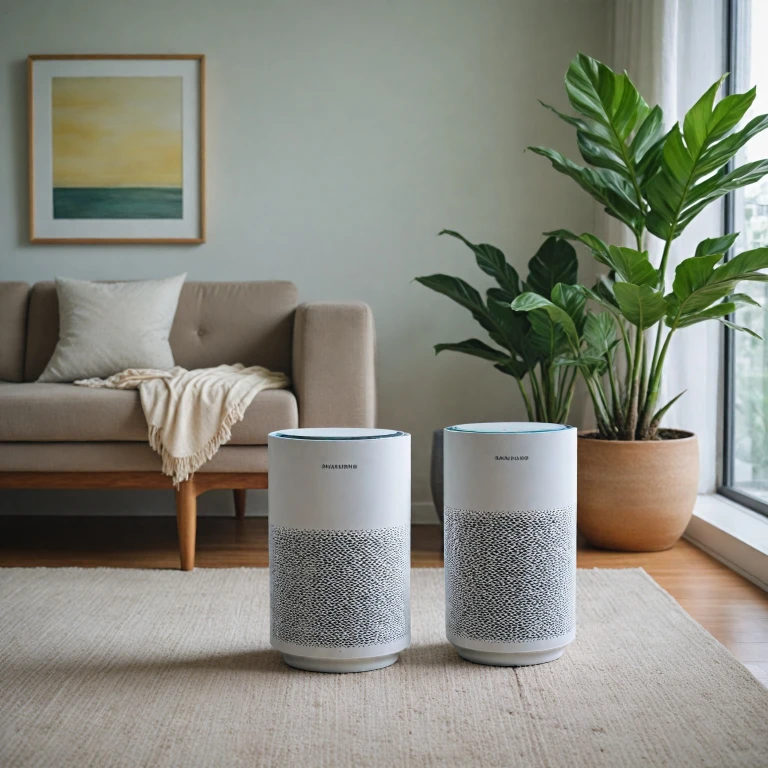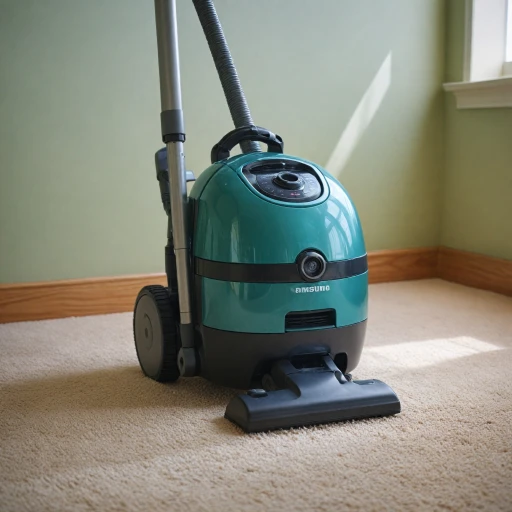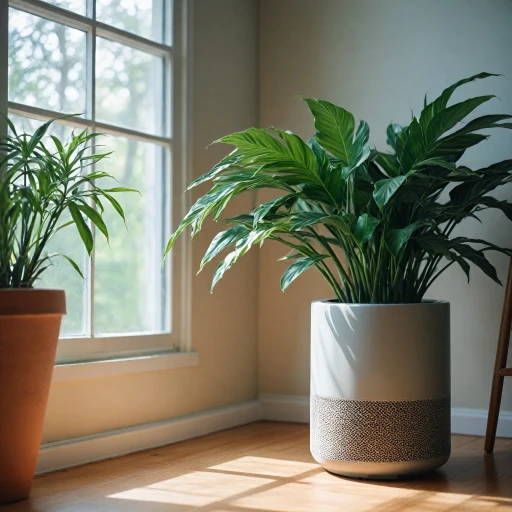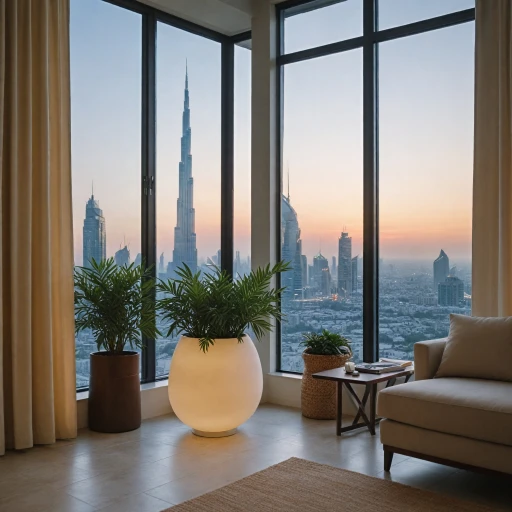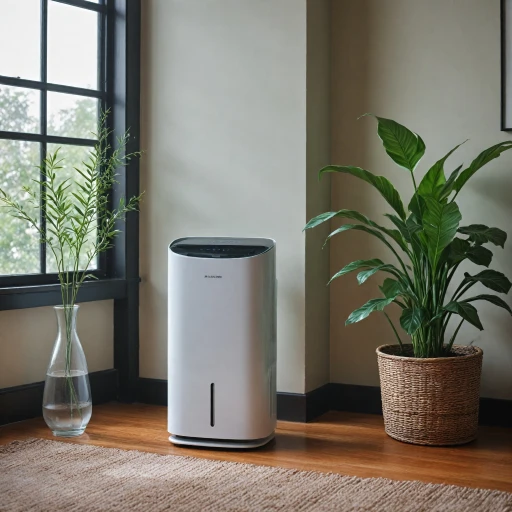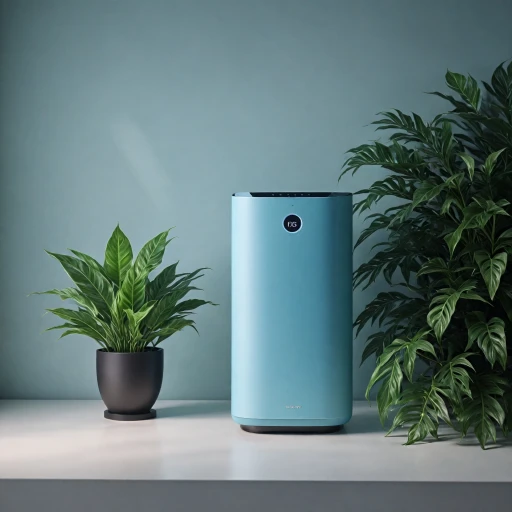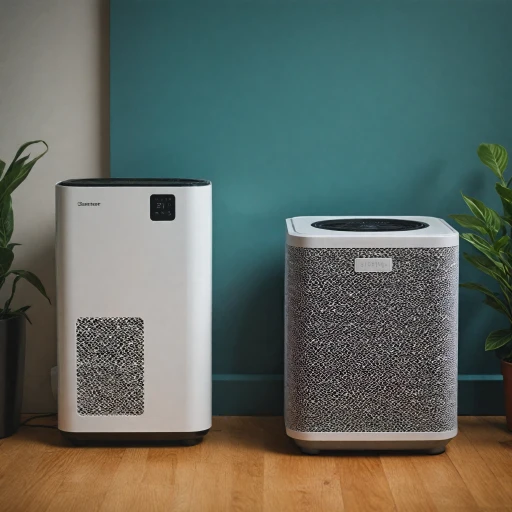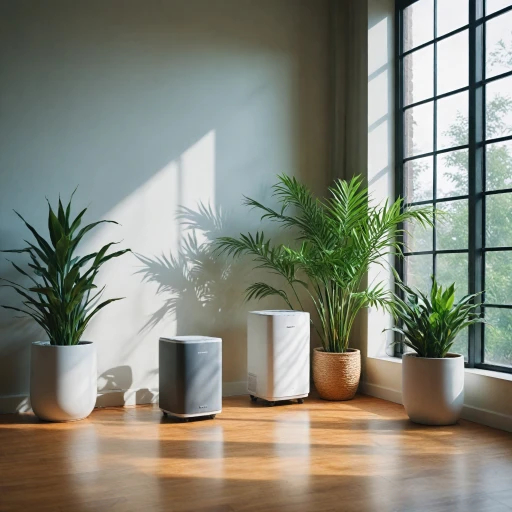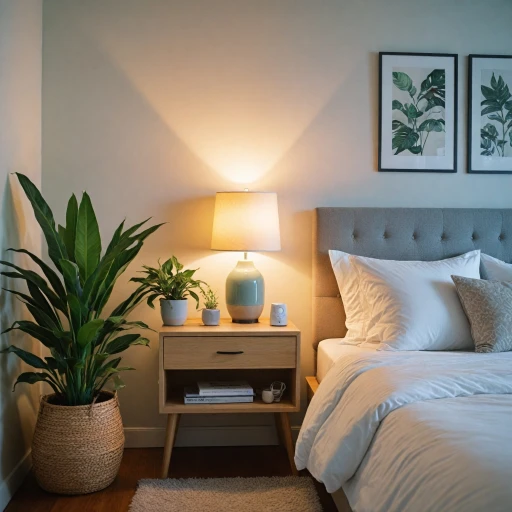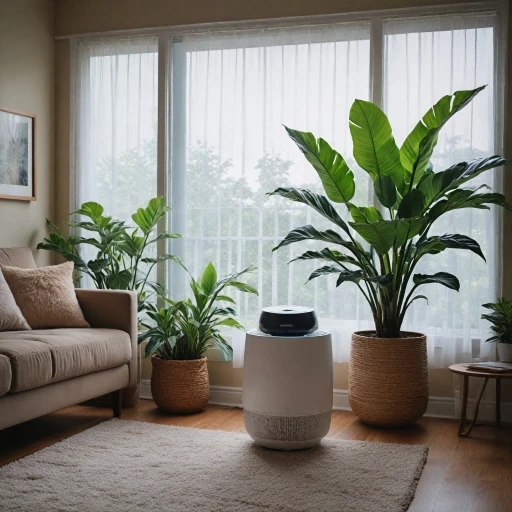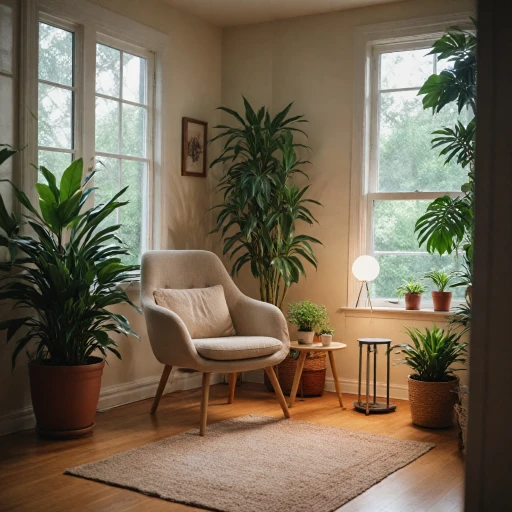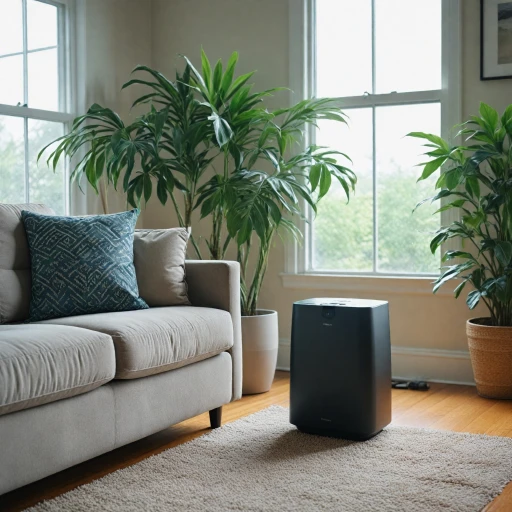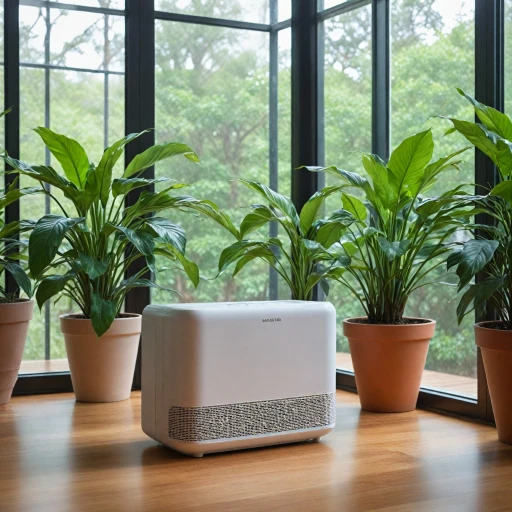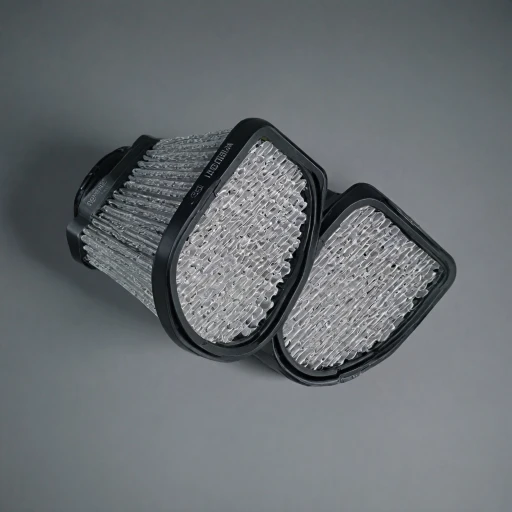
Understanding the importance of air purifiers
Why Air Purifiers Matter More Than Ever
In recent years, the significance of maintaining good indoor air quality has escalated due to rising concerns about pollution and allergens. With the increase in environmental pollutants, many homeowners are turning to air purifiers to help create a healthier living environment. These devices are designed to filter out contaminants from the air, including dust, smoke, odors, and pet dander. Air purifiers are particularly beneficial for individuals suffering from allergies or respiratory issues, as they effectively reduce the presence of pollutants and allergens. The best air purifiers come equipped with HEPA filters, which are renowned for capturing particles as small as 0.3 microns. This technology ensures a cleaner, allergen-free space. Moreover, air purifiers promote a more energy-efficient home. By removing airborne particles, they help reduce the burden on heating, ventilation, and air conditioning systems, potentially leading to lower energy consumption and costs. This is particularly important as energy efficiency becomes a focal point in household management. Exploring the advantages of air purifiers reveals their ability to create a comfortable and healthy atmosphere by tackling common indoor pollutants. As technology continues to evolve, future air purifiers are expected to feature real-time air quality monitoring, helping homeowners maintain optimal conditions effortlessly. Understanding these benefits is the first step in choosing the right air purifier for you and your house. As you embark on this journey, consider your specific needs, including the room size, types of pollutants present, and your budget, to find a model that will provide the best clean air experience for your home.Key features to look for in an air purifier
Unveiling Must-Have Features in Air Purifiers
Understanding what makes an air purifier effective is vital. When evaluating the devices available on fintechzoom, several key features stand out:- Quality Filters: Look for High-Efficiency Particulate Air (HEPA) filters, which are crucial for capturing tiny particles and allergens such as pet dander. A good purifier will also incorporate activated carbon filters to help combat odors and gases.
- Room Size Compatibility: Ensure the purifier you choose can handle the size of your room. Different purifiers are designed for various room dimensions, so matching the device's capacity with your space is essential.
- Energy Efficiency: Opting for energy-efficient models can lead to long-term savings on electricity bills. They are environmentally friendly and cost-effective over time.
- Real-Time Monitoring: Advanced purifiers often have sensors to measure indoor air quality and display real-time data. This feature helps users understand when air quality fluctuates and when the purifier is most needed.
- Noise Levels: Consider purifiers that operate quietly, especially if you plan to use one in a bedroom. This ensures a peaceful environment while maintaining clean air.
- Smart Features: Some of the best air purifiers are equipped with smart technology, allowing users to control devices via smartphones or integrate with smart home solutions.
Comparing top air purifiers on fintechzoom com
Evaluating Fintechzoom's Air Purifier Picks
Navigating through the myriad of air purifiers available can be daunting, especially when considering their various features and technological advancements. Fintechzoom helps in cutting through the noise by spotlighting some of the leading air purifiers currently available on the market. When comparing different models, several factors come into play:- HEPA Filters and Beyond: High Efficiency Particulate Air (HEPA) filters are a staple in quality air purifiers due to their ability to capture up to 99.97% of allergens, dust, and particles as small as 0.3 microns. Fintechzoom highlights purifiers equipped with HEPA filters, which excel in removing pet dander and other pollutants.
- Activated Carbon for Odor Removal: For those concerned with odors, purifiers featuring activated carbon filters are recommended. These are particularly adept at trapping odors and harmful gases, ensuring clean air in your home.
- Energy Efficiency Innovations: With rising energy costs, energy efficiency is a critical consideration. Fintechzoom's featured purifiers boast energy-saving modes, ensuring that you maintain a clean indoor environment without inflating your energy bill.
- Real-time Quality Monitoring: Top purifiers now come with sensors and displays that provide real-time feedback on indoor air quality. This feature allows homeowners to make informed decisions about when to run their devices.
Benefits of using an air purifier at home
The Advantages of Incorporating Air Purifiers at Home
When contemplating the integration of air purifiers into your living space, understanding their manifold advantages is imperative. These devices serve an essential role in enhancing indoor air quality, delivering both immediate and long-term benefits.- Enhanced Air Quality: At the core, air purifiers are designed to filter out pollutants and allergens from the air. By trapping particles such as dust, pet dander, and pollen, especially through high-efficiency particulate air (HEPA) filters, they play a vital role in providing cleaner indoor air. This is particularly beneficial for individuals suffering from allergies or respiratory conditions.
- Odor Elimination: Many air purifiers are equipped with activated carbon filters, which excel in absorbing unpleasant odors. Whether it's cooking smells, smoke, or pet-related odors, these filters work to maintain a fresh atmosphere in your house.
- Reduction of Pollutants: In an era where indoor pollution can sometimes surpass outdoor levels, having a system that continuously monitors and cleans the air is crucial. Air purifiers help reduce airborne pollutants such as volatile organic compounds (VOCs) and harmful gases, ensuring the air you breathe is significantly cleaner.
- Energy Efficiency: Modern purifiers are designed with energy efficiency in mind. By optimizing energy use without compromising performance, they ensure that you can keep your home environment healthy without a substantial rise in energy consumption.
- Health Benefits: Beyond improving air quality, the use of top-tier purifiers can lead to better overall health. Cleaner air reduces the burden on your respiratory system and can mitigate symptoms of asthma and allergies. The presence of an air purifier also often results in prolonged peace of mind, knowing your indoor environment is being proactively managed.
Challenges in selecting the right air purifier
Finding the Right Fit for Your Space
Choosing the best air purifier for your home can be a daunting task, given the myriad of options available on fintechzoom and other platforms. The first challenge is understanding the specific needs of your space. Different rooms may require different types of air purifiers based on their size and the level of pollutants present. For instance, a small bedroom might benefit from a compact model with HEPA filters, while a larger living area might need a more robust system with activated carbon filters to tackle odors and allergens.
Balancing Features and Budget
Another challenge is balancing the desired features with your budget. High-end purifiers often come with advanced technology, such as real-time air quality monitoring and energy efficiency modes, but they can be expensive. It's essential to weigh the long-term benefits of these features against their cost. Some purifiers are designed to be energy-efficient, which can save money on electricity bills over time.
Understanding Filter Types and Maintenance
Filters are a critical component of any air purifier, and understanding the different types is crucial. HEPA filters are excellent for capturing small particles like pet dander and allergens, while activated carbon filters are better for removing odors. Regular maintenance and timely replacement of these filters are necessary to ensure the purifier works effectively. This can be an ongoing cost and effort that potential buyers need to consider.
Evaluating Noise Levels and Aesthetics
Noise levels can also be a concern, especially if the purifier is intended for a bedroom or a quiet office space. Some purifiers operate quietly, while others might be disruptive. Additionally, the design and aesthetics of the purifier can influence your decision, as it should complement the decor of your house.
Considering Future Trends
Lastly, staying informed about future trends in air purification technology can help you make a more informed decision. As technology advances, new features and more efficient models are likely to emerge, offering better air quality solutions. Keeping an eye on these trends can help you choose a purifier that remains effective and relevant in the long term.
Future trends in air purification technology
Advancements in Air Purification Systems
As technology evolves, so does the effectiveness and efficiency of air purifiers. Recent developments in purification technology are paving the way for more advanced and tailored approaches to indoor air quality management. These innovations not only promise cleaner air but also bring exciting possibilities in design and functionality.- Enhanced Filters: High Efficiency Particulate Air (HEPA) filters remain a staple in air purifiers. However, recent advancements have led to even more efficient particle filtration systems that capture smaller particles and a broader range of pollutants. This includes enhanced filters that target specific allergens like pet dander and odors.
- Smart Connectivity: In our increasingly connected world, purifiers now boast smart features allowing real-time monitoring of indoor air quality. Some models can connect to smartphone apps, providing insightful data about air quality inside your house. This functionality helps in understanding pollution sources, allowing more personalized air management.
- Energy Efficiency: As concerns about energy use grow, manufacturers are focusing on producing models that work with lower energy consumption while still delivering the best performance. Energy-efficient purifiers are a boon for long-term savings, offering clean air without a spike in electricity bills.
- Dual-Function Devices: Many devices are being designed with multiple functions, such as air purification combined with humidifying or dehumidifying capabilities. These multitasking purifiers help maintain an optimal indoor environment, particularly in areas with fluctuating humidity levels.
- Advanced Filtration Technologies: Beyond HEPA and activated carbon, new filtration technologies are emerging. These include photocatalytic oxidation and electrostatic precipitators, which offer different methods for attacking pollutants and ensuring exceptionally clean air.
